The installation “Heavyweight” is a portal. It’s like a still whirlwind that has gathered men’s long johns and shirts, all of them stiff, like canvas, painted in gray-blue. And then it’s as if the painting exploded. The work was assembled by Anna Rutkowska in the Warsaw gallery-garage Stroboskop. In fact, the installation was indeed heightened by the gallery’s name.
The work transports us into the world of the art academy in Warsaw, where for generations it seems, there have been only male professors and female students. Its concise curatorial text states that the work is a reaction to numerous personal clashes the artist has had with acts of institutionally legitimized violence. The text immediately brings to mind discrimination and harassment of students by professors. Lazy discussions and ambiguous observations from professors are, unfortunately, still a sad reality by which young female students are still burdened in art schools – says critic Karolina Plinta in a post on her Facebook page briefly presenting Rutkowska’s exhibition at Stroboskop. This is a deeply rooted nightmare in academia. As a student at the art academy, the artist’s mother, Marta, had troubles with the same men who are now her daughter’s professors. Upon seeing this still cyclone Marta commented that her daughter awoke a demon. For her part, Anna, sailing on the waves of troubles induced by some of her professors, began to dress in large shirts. The asexual costume was supposed to protect her from the obnoxious eyes of some of the academy’s elderly alpha males (I remember similar stories told by my grandmother. She wore bags of hemp when Soviet and German occupation-liberation armies pervaded the city, but this association comes later, as you will see.). The asexual denim shirts, however, were not the perfect solution. Maybe that’s why “Heavyweight” also reminds Karolina Plinta of the owls from Goya’s painting “The Sleep of Reason…”.
After finding out that the installation was actually built with her professors’ shirts, the work becomes even more sinister. Yet if you chat with the authoress you will discover that instead, the professors who donated their shirts are some of the better ones and are friends of the artist. The wicked ones ignored her request. Goya’s owls are somehow transformed into watchful, scholar owls, as they are presented in popular culture. Rutkowska’s work undoubtedly has the potential to generate these associations as only a few works of contemporary art manage to.
On the floor in the vortex of the tornado are a few dozen polaroid photos, scattered in a pile. Featuring the artist herself, the images are divided into two distinct categories. One depicts the angel: the artist is dressed in white; she holds in her hands the rigid pieces from which she built the installation. The fabrics are stiffened by the load of too much paint, also an homage to the history of the color blue. The second set of images are nudes. The artists’ body is stained by the clothing. Some of the positions she takes are really challenging, disturbing, in a sense, Duchampian. I’m thinking about “Étant donnés”. The swirl of clothes also becomes reminiscent of a huge pubic triangle. The shadow cast onto the walls of the space makes you think about the vagina dentata, a legend that, among other things, was intended to restrain lusty lads. “Heavyweight” is a portal into surrealism and the mysteries that this genre proposes. After all, was it Duchamp or Baroness Elsa von Freytag-Loringhoven that authored “Fountain”? Was Duchamp writing in the third person about Rrose Sélavy, his feminine alter ego, in the famous controversial letter to his sister?
These nudes are particularly interesting because Rutkowska is their authoress. She has initiated and has also participated in several performances where she has “loaned” her body. One could cite, for example, the revival series of the Maria Klassenberg archive coordinated by Aneta Grzeszykowska in collaboration with Jan Smaga, in which she participated with the performer Wojtek Żera. She was told what she had to do and she obeyed. The body became a brush moved by the will of other artists. Rutkowska therefore also hints in this newer work at the marginal domain in which art overlaps with research and education through practice.
I felt somehow forced under the skin of a character from a Slavic fairytale who has been halted at a crossroads, facing a famously strange road sign. After graduating from college, artists in Poland have a very narrow chance for a career in the art world. They are almost literary told that, “If you take a right turn, you’ll die as an artist, if you take a left turn, it’s even worse, if you go forward, it’s best not to ask what will happen to you.” The only way forward is upward, to try to fly, to become heavenly creatures. To become skydwellers.
Blue as a theme, is another dimension where the whirlwind of Stroboskop might throw you. A visitor at one of her previous exhibitions remarked to the authoress that all her paintings up until recently resembled what can be seen through the windshield of the blue driver’s bus signed by the artist Andrzej Wróblewski – a vague white-red landscape, a kind of inverted Polish flag. Rutkowska is thus inspired by Wróblewski’s paintings in which people wore clothing stitched from heaven. Wróblewski’s figures in blue shirts stood out in Poland as new icons of post-war traumas, both personal and societal. His characters are stripped of life by bullets, shells, nooses, hunger and rape.
Wróbelski also recently inspired a series of large-format photographs by Oskar Dawicki. The artist tried to contort his body into the shape of Wróblewski’s broken figures. Dawicki’s works were presented in 2013 at Warsaw’s Raster gallery under the title “Profane Gymnastics”. Dawicki’s performances are known for their subtle and subversive character. More recently the artist has also acquired an added tone of advertising as if coming from the pages of a glossy magazine. This particular series might have been read as a parody if it did not come at such a critical moment. The ideational potential contained in Wróbelski’s paintings demanded a revisit, Dawicki answered the call. In a similar gesture, the artist wrote on a sheet of paper the following sentence: “I have never done a work about the Holocaust.” The work, a 2009 commission by the Warsaw Singer Festival, is usually interpreted both as one that deals directly with the Holocaust, and acts as a bold statement on the problem of commodification or the trivialization of weighty topics by many artists.
Now it appears as though Dawicki’s appropriation has been further appropriated by this authoress of a younger generation. Among a rich set of images that inspired Rutkowska’s work were also the chopped-up purple and blue canvases of Jacek Sempoliński; the interiors of Jacek Sienicki’s purple apartment, Jan Cybis’s lavish flower vases (who also signed his works in the same blue of Rutkowska’s shirts). Some of these painters were part of the post-Impressionist current, or as it was known in Poland, kapist – from the acronym ‘K’ ‘P’ – ‘Komitet Paryski’ the Polish for ‘The Student Aid Committee for Art Students in Paris’. Kapists emphasized the autonomy of the visual arts and denied the influence of other genres of art, or of history, and various thought schools on painting. Of course, the post-kapists followed, Wróblewski being a striking example. Rutkowska thus opens the door into a brief history of Polish contemporary art. She also spoke to me about the azure landscapes of Rajmund Ziemski, about the compositions made out of sprayed bones by Janosz Stern and the falling bodies of Tadeusz Kantor. But it is worth noting that all of these authors who have inspired Rutkowska, some of which also teach at the Academy of Art, are all men. The only woman she mentioned was Hannah Rudzka-Cybis, the only one to assert herself as a painter. But she was the wife of a professor, Jan Cybis, and her work was marginalized. There is also the performance fragment from the Maria Klassenberg archive, where Aneta Grzeszykowska ordered the performers to paint with their bodies a large sheet of paper lying on the floor in blue. This also calls to mind the Azure era in Polish art – the new avant-garde of the late 1960s, described, among others, by Jerzy Ludwiński or Zbigniew Warpechowski.
If one looks at Polish art history, one will discover that for many female students, graduation from university clearly meant the end of their public art practice, it was a kind of professional death. Few women artists still participate in exhibitions. Graduation marks their disappearance from the collective memory and the art world. Many of the male graduates of the Academy also cease to practice art unless they become academy professors. Interestingly, Anna’s parents met at the academy and not surprisingly their exhibition practices were reduced to crates in storage cellars. Yet through their encounter, Anna Rutkowska was born. With her parents behind but also facing her, she looks ahead, she wonders and is also being asked what and how will she manage her future? She sees it in blues, through a swirl of asexual, rigid men’s shirts and long johns.
Rutkowska’s work unlocks the often heavily padded parent-child relationships. The crate where the artist’s mother kept her work was recently removed from her grandparents’ apartment building due to new housing regulations. The empty crate, crafted by Anna’s grandfather, was brought into the house at night and then during the day they brought it back outside so that the landlord could see that the box had been removed. The crate with Marta’s paintings became a member of the family; one which had to be deported because of new rules. “Heavyweight” was inspired by these family experiences and dynamics, and also by her father’s artworks.
The artist’s father, Martin Rutkowski, works in a graphics and advertising company. His thesis, apparently a rather uncertain text, was based on the subject of blue triangles, which he also compulsively painted during his student years. Currently the paintings are kept in a cellar, one that was recently robbed. The only objects left behind were the paintings. Her father was rarely at home like many other fathers of the transition. Anna Rutkowska read her father’s diploma as a teen and has since become obsessed with blue triangles.
Parents, but also grandparents, usually remain trusted allies in the quarrels faced by their children and grandchildren. In the case of Anna Rutkowska, the mythologies surrounding her work become even more interesting when we learn of her mothers’ psychic powers, and that her father has recently started painting with spent bullets shot from a real gun. Anna Rutkowska, also knows a thing or two about self-defense; for fifteen years she has been practicing martial arts. Her courage has a physicality to it.
Rutkowska’s concerns in the field of art somewhat correspond to my own, I’m also obsessed with blue triangles. Maybe that’s why I’m writing this text. I am particularly interested in the history of blue triangles as labels, for example used in Nazi concentration camps to identify prisoners as “migrants”. This is the least talked about category of prisoner, most probably because they were eliminated so efficiently. In Auschwitz, there were only red (political prisoners), green (criminals), black (the antisocial, mentally ill, women who had abortions, etc.), purple (Jehovah’s Witnesses), pink (homosexuals), and yellow (Hebrew) triangles. Rutkowska’s whirlpool is a three-dimensional triangle.
Rutkowska notes that this installation grew out of a dream, a dream that goes like this: an immigrant female artist, originally from France, is the mistress of a renowned Polish curator. She came to Poland, where she then decided to stage a performance that consisted of walking barefoot amongst piles of men’s clothes. Crowds of hipsters came to watch, the dream ends. Rutkowska woke up and decided to translate her dream into reality.
It’s worth mentioning that the curator of both the exhibition and of Stroboskop is Katie Zazenski, an American artist, who is now based in Poland. Respectively, the dream and this collaboration directly confronts the viewer with of all kinds of (perhaps pseudo) conflicts, between the majority and the marginalized populations of Polish, European, or other global conglomerations.
“Heavyweight” is not only an extraordinarily complex structure that generates countless associations, it also inspires action. Sometime after I saw Rutkowska’s exhibition I resumed reading the biography of Boris Pasternak, brilliantly told by Dmitri Bykov. A poem, which Pasternak translated from Georgian, caught my eye. “The Heavenly color, the color blue” was written by Nikoloz Baratashvili in 1841. It has been speculated that at one point the translation of this poem into Russian saved Pasternak from the Stalinist repressions and that Stalin nicknamed Pasternak niebozhyciel – sky dweller. Anna Rutkowska’s installation compelled me to draw more attention to this respective fragment from the biography. Continuing this thread, I searched for the verse and translated it quickly into Romanian which is now translated further into English:
Heavenly color, the color blue
Heavenly color, the color blue
Since childhood I fell in love with you.
Then it showed me the road
To new cerulean views.
And now when I reached
the peaks of my days
I will not sacrifice on the altar of other shades
Azure by no means.
It is beautiful in itself.
It is your gaze at the skies,
the color of your beloved eyes
of blooming lupines.
It is the color of my dreams.
It is also the pigment of heights.
In this bluish beams
are submerged never-ending earthly sights.
It is a smooth transition
in the unknown from repent,
from my relatives who lament
at my rendition.
It is the diaphanous blue
over my gravestone’s dew
and the dove winter flame
Over my name.
Nikoloz Baratashvili
I dare think that Rutkowska’s work opens the door to our own blue shirts, symbols that we also have in Romania. It transports us to a past that we have not ruminated long enough on, one that still inspires pain even today. But wow, how the blue shirts differ from each other! I refer here both to the apparel of the infamous spearmen – lanciers and to the impact that the living newspaper “The Blue Blouses” had on the Romanian avant-garde. But here’s how David Schwartz ends the text “Blue Blouses – the most widespread avant-garde movement in the world”, “In the local, Romanian context, the amateur theater of the socialist period – the artistic agitation brigades and the street groups – that used at least some of the collage techniques developed by the Blue Blouses, represent an extraordinarily rich chapter, with potentially huge artistic and political challenges, but for the time being these remain obscure and completely unstudied.”
Let us return. Let us search. Let us rediscover and apply.
Anna Rutkowska’s Instagram
Heavyweight
by Anna Rutkowska
Photo collaboration: Adam Gut
Stroboskop Art Space, Warsaw
Katie Zazienski – Managing Director
Translated by Bogdan Scoromide, with the aid of Kathryn Zazenski
POSTED BY
Teodor Ajder
Teodor Ajder was born in Chișinău. He studied psychology at Babeș-Bolyai, Cluj-Napoca, and got his master's degree in education sciences and his doctorate in media, information and environmental sc...
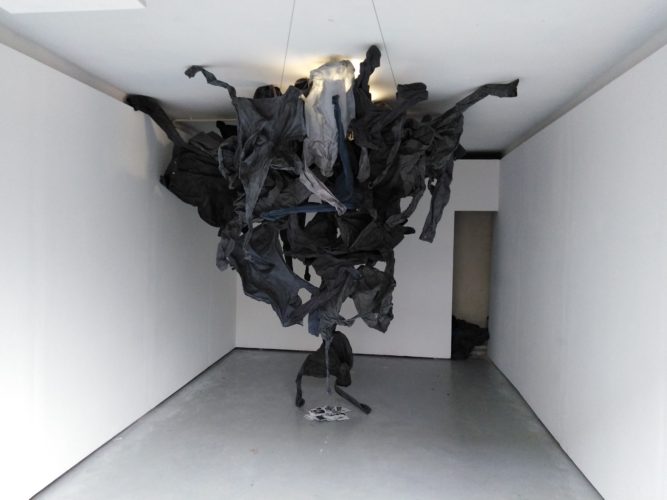
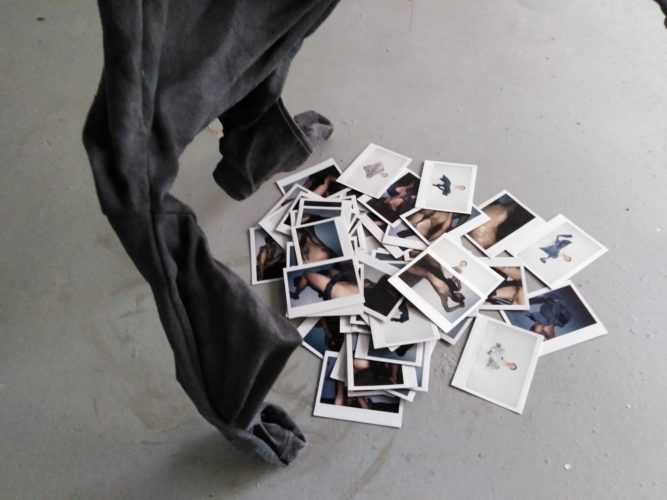
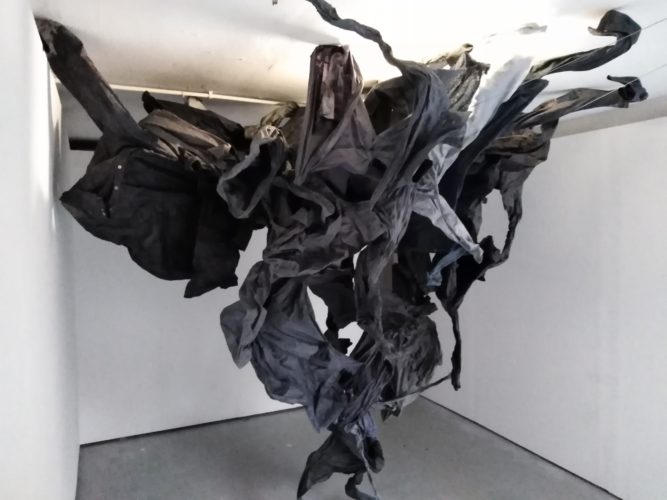
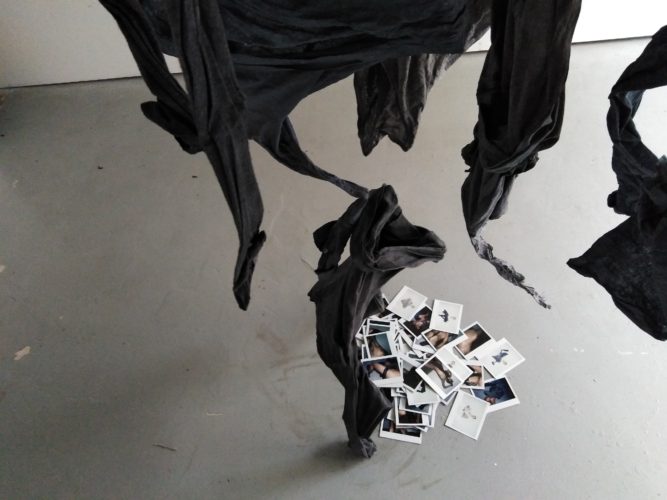
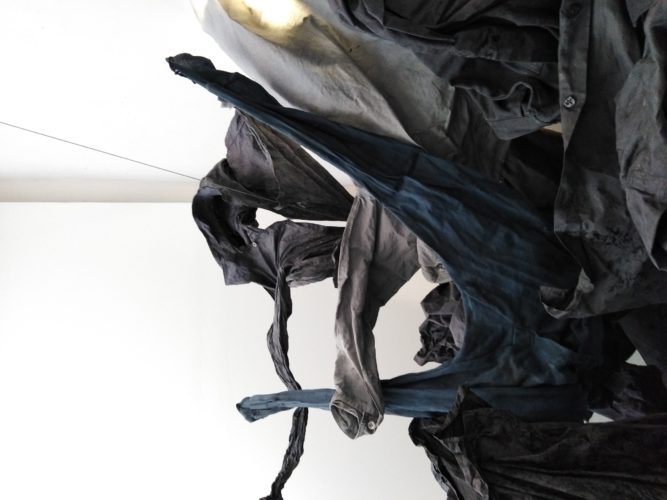
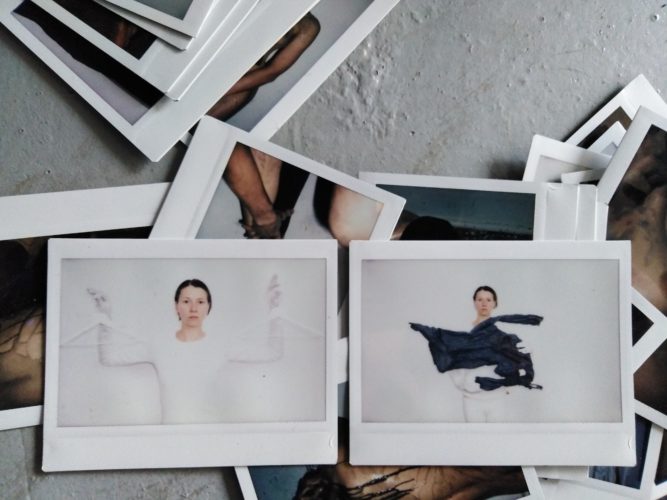
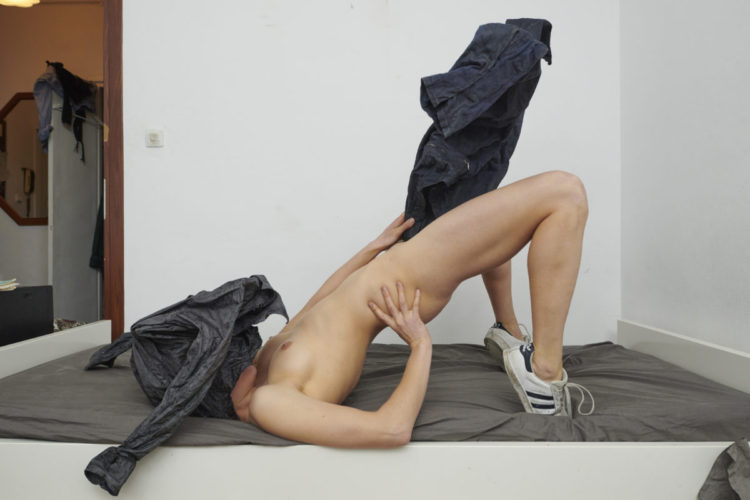
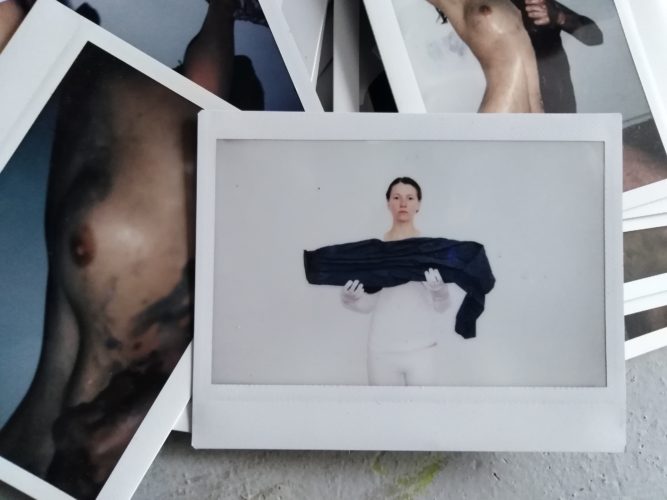
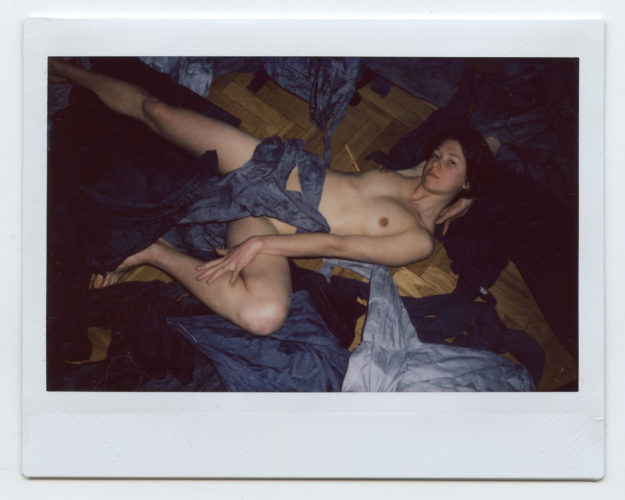
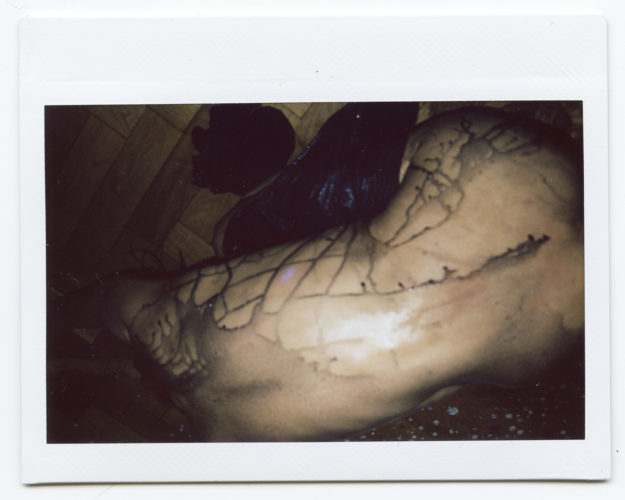
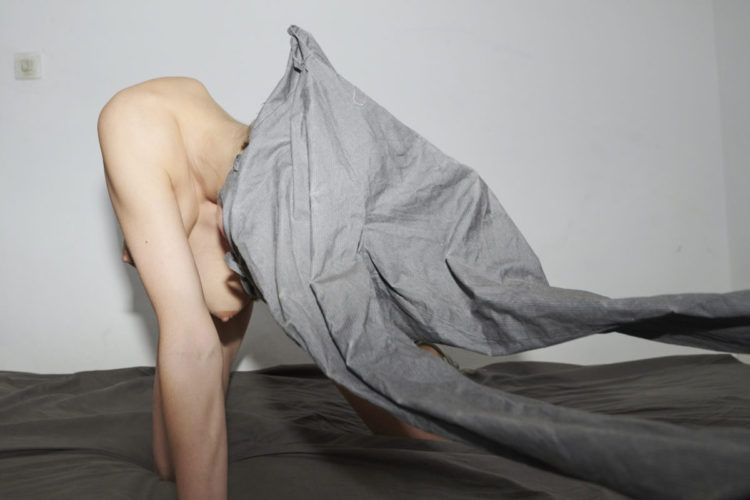
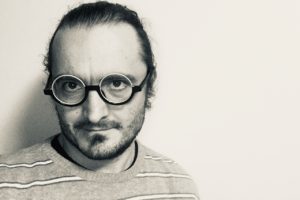
Comments are closed here.